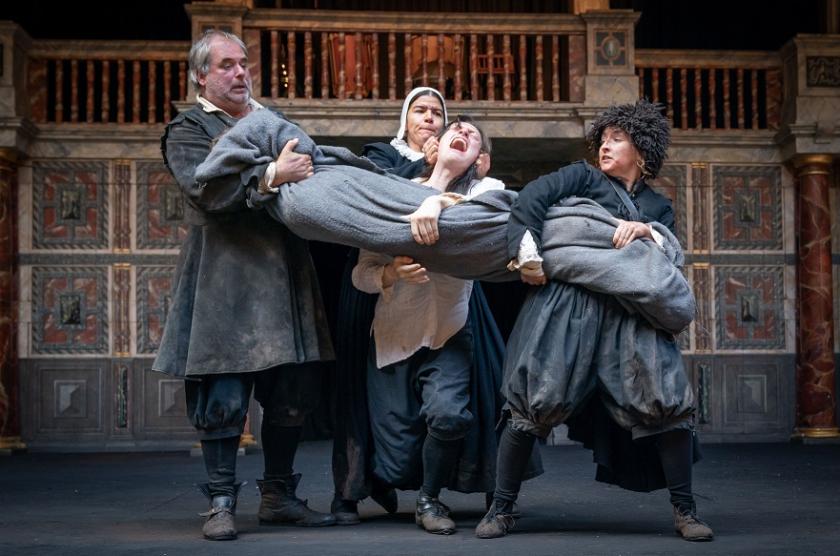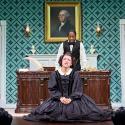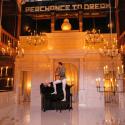The end-of-season contemporary writing slot at the Globe must be a proposal as full of promise for playwrights as it is perhaps intimidating. There’s the sheer scale of the space and the chance to write for a large cast; a historical subject seems to be part of the brief, so a chance to experiment for many writers, while despite a run that’s rarely more than a dozen performances, it brings an investment in rehearsal time and other support that commercial theatre couldn’t offer.
The challenge, of course, is living up to the rest of the repertoire, as well as finding material that somehow also strikes a contemporary note. In Eyam, Matt Hartley has chosen the 1665-66 plague that affected the titular Derbyshire village, during which its inhabitants kept themselves quarantined to prevent the spread of the pestilence. It fits the Globe’s original incarnation, more so at least than last year’s Boudica: the theatre itself would have been one of the first things to shut when plague affected 17th century London.
When the different strands do come together, the result is frequently cacophonous
But Hartley has made Eyam more than just a study of a community decimated during self-imposed isolation. He’s as keen to register the village's divided fabric at the time, including its relation to religion, an issue that was complicated in the aftermath of the Civil War and Restoration. The social structures underlying its lead-mining economy are also complex.
While that’s certainly ambitious breadth, it brings shortcomings on the dramatic front – not least that the plague itself only appears after some 70 minutes, a loose prologue that stretches the evening to three hours. Adele Thomas’s production has a cast of 15, playing some 20 roles, and its cavalcade of characters doesn’t always meld together, with a lack of organic development. The stories of the play divide largely across family lines, and interconnections are not always enough; when the different strands do come together, the result is frequently cacophonous.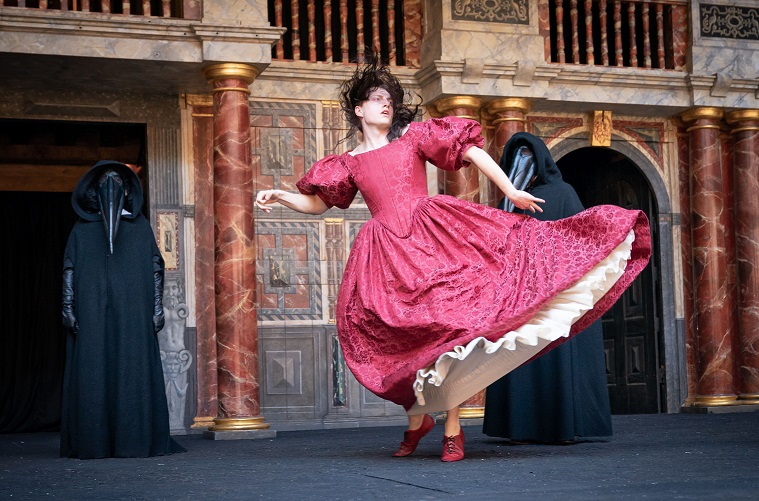 As the production’s opening tableau, a cluster of model houses dominated by the village church, suggests, religion was at the centre of this world, and the most solidly built characters here are those connected directly to it. A short introductory scene shows an incumbent minister being hung by angry parishioners, highlighting the fact that belief was a contentious business in Eyam. The arrival of his replacement opens the action as such, and William Mompesson (Sam Crane, pictured below) and his wife Katherine (Priyanga Burford) are central to the piece as they accustomise themselves to an environment to which they initially seem ill-suited. Burford’s character in particular becomes an increasingly defining stage presence as her resolution surpasses that of her weaker husband.
As the production’s opening tableau, a cluster of model houses dominated by the village church, suggests, religion was at the centre of this world, and the most solidly built characters here are those connected directly to it. A short introductory scene shows an incumbent minister being hung by angry parishioners, highlighting the fact that belief was a contentious business in Eyam. The arrival of his replacement opens the action as such, and William Mompesson (Sam Crane, pictured below) and his wife Katherine (Priyanga Burford) are central to the piece as they accustomise themselves to an environment to which they initially seem ill-suited. Burford’s character in particular becomes an increasingly defining stage presence as her resolution surpasses that of her weaker husband.
Mompesson is an appointee of an absentee landlord, and both are royalists reasserting the new regime over the parish’s earlier occupant, Thomas Stanley (Annette Badland: gender-neutral casting signifies little here, not least because much costuming is in consuming black). The puritan Stanley had led Eyam through the Commonwealth years, before the passing of the act of uniformity brought his exile; he has now returned to the village to bury his wife, and finds the support of Philip Sheldon, the place’s wealthiest resident and effective powerbroker.
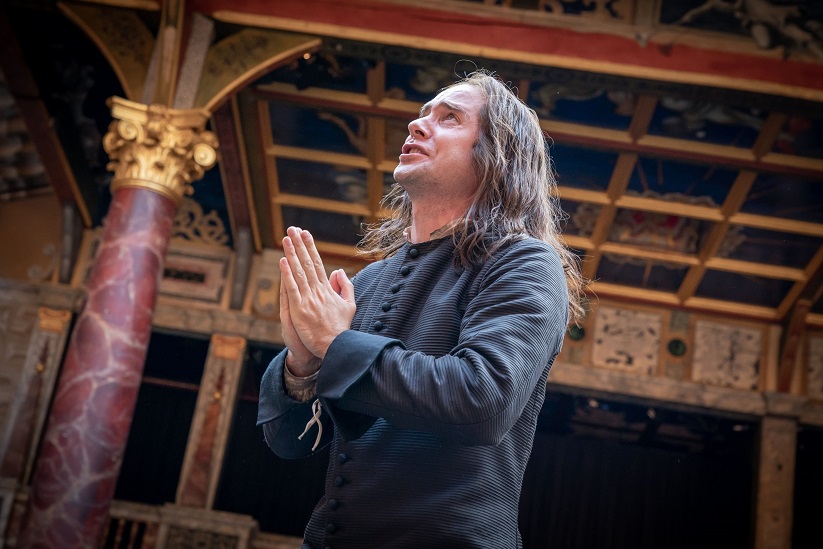 Played by Adrian Bower, Sheldon’s brash vitality has no time for ceremony, and the sweary vernacular of his speech is always colourful. Hartley’s combination of 17th century language with that of the present ay is generally effective, though the obvious intrusion of the modern occasionally jars (“the only direction I seek is the exit” marks Sheldon’s departure from the plague-infested village). It was his younger wife who was responsible – albeit very indirectly – for the outbreak of the plague, when she approached a tailor for a dress; when he sent away to London for the cloth, it arrived infested with the fleas that initiated the infection.
Played by Adrian Bower, Sheldon’s brash vitality has no time for ceremony, and the sweary vernacular of his speech is always colourful. Hartley’s combination of 17th century language with that of the present ay is generally effective, though the obvious intrusion of the modern occasionally jars (“the only direction I seek is the exit” marks Sheldon’s departure from the plague-infested village). It was his younger wife who was responsible – albeit very indirectly – for the outbreak of the plague, when she approached a tailor for a dress; when he sent away to London for the cloth, it arrived infested with the fleas that initiated the infection.
Hartley’s treatment of those characters exemplifies his rapid-fire characterisation. He throws in a gay strand, setting up an attraction between Jordan Metcalfe’s tailor and Luke MacGregor’s Edward Cooper, the latter’s character established initially through his loudly domineering mother (Sirine Saba). It’s definition by the very broadest brush, and the gay element seems almost soap opera-style contemporary, a feeling only enhanced by its being followed by a sort of mad scene in which the stricken Edward dances in the fateful dress (it certainly brings a burst of colour to designer Hannah Clark’s otherwise dark visual palette, pictured centre). That said, rebellion is the most effective means for establishment of character, and it’s done very effectively in the case of Emmott Sydall (Norah Lopez-Holden) with her irrepressible, and vocal, opposition to her angry father.
Director Thomas directs her production towards spectacle, including chorus-like figures shrouded entirely in black, complete with long beaks – human crows awaiting their carrion, we presume. It emphasises music (from Orlando Gough) and group choreography (Emma Woods) and makes full use of an extended front stage, with perpendicular flanks that come right out into the Globe’s pit. The amplified space is used for all sorts of action, from dialogue between characters cut off from one another, to a procession of burials that gives Eyam the quality of Hamlet on speed. It may reduce the space for groundings considerably, but lack of room for audiences is not going to be an issue here. Another factor of the closing month of the Globe’s season is that productions play out in darkness, and Eyam will be as memorable for some of its visual effects as for a text that rather confounds by its attempts at completeness.

